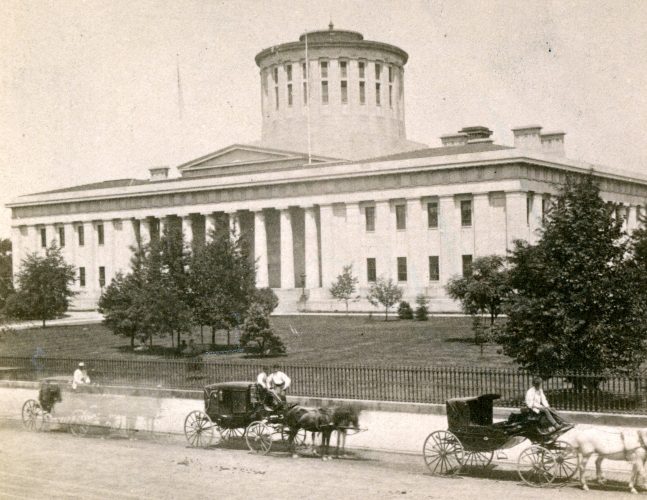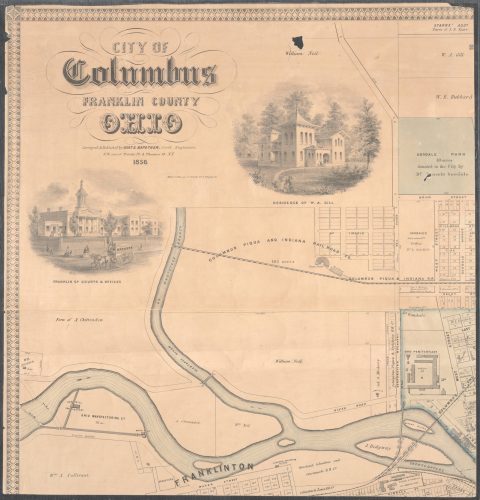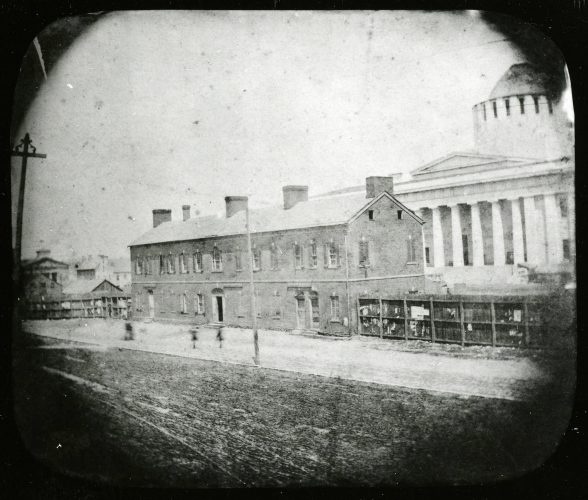“A Beautiful City:” Ohio Architect Nathan B. Kelley

Ohioans have made prominent contributions to their home state in many ways, including politics, innovation, literature, and art. But why are some remembered while others fade from public knowledge? Today we’re shining a light on Nathan B. Kelley, an architect who helped shape the nineteenth-century Columbus skyline and made major contributions to the Ohio Statehouse.
Kelley (sometimes spelled Kelly) was born February 26, 1808, in Warren County, Ohio. He married Malinda Hufford in 1832, shortly before the couple moved to Columbus. Kelley’s early work in the city included serving as the construction superintendent of the Ohio Institution for the Education of the Blind (1839) and as the designer and construction superintendent of the Ohio Lunatic Asylum (1835) and the Franklin County Court House (1840). He also served as the city engineer of Columbus from 1841-1843. However, Kelley’s most enduring work is his contribution to the Ohio Statehouse.

A series of architects worked on the Statehouse over its twenty-two-year construction from 1839-1861. Kelley became the state architect in 1854, after his predecessors took all the plans and working drawings with them. The building’s exterior was close to completion, but interior work was still in the early stages. Kelley saw no evidence of a heating or ventilation plan, so he designed an innovative steam heating system (at a time when central heating was a rare luxury) and added indoor plumbing.
Kelley wanted the building’s interior to be more ornate than its Greek Revival exterior; he thought additional ornamentation would honor the building’s importance. His vision is evidenced by the detailed Victorian-style decorations in the House chamber and the rotunda’s ornate imported floor tiles. However, the Statehouse oversight commission thought his designs were too ornate and too expensive for the building, so he was forced off the project in 1858.
After the Ohio Statehouse, Kelley moved to Cincinnati and was the architect for several buildings there and in Kentucky, including two women’s colleges and the Western Lunatic Asylum (now Western State Hospital), a psychiatric institution that still houses patients today. He then returned to Columbus, where he designed schools, churches, commercial buildings, private residences, the city waterworks, and more. Although many of his buildings have since been demolished, the Hayden building survives, along with the Benjamin E. Smith residence (now home to The Columbus Club).

Nathan Kelley died of paralysis on November 20, 1871. His obituary in the Ohio Statesman stated that “Major Kelly was an old citizen of Columbus, and from the nature of his business very closely identified with our growth into a beautiful city. He had a large circle of acquaintances and warm friends, who admired him not less for his rare architectural skill than for his good qualities as a man.” Despite this, he had few financial assets when he died, and was buried in Green Lawn Cemetery in an unmarked grave next to his son William and daughter Martha Jane. (His other son, James, would be buried there five years later.) In 2012, the Capitol Square Foundation, working with the Green Lawn Cemetery Foundation, installed a marker created from an original slab of Statehouse limestone.
You can learn more about Kelley’s contributions to the Ohio Statehouse on the Ohio Statehouse website and on the Ohio Channel.
Thank you to Stephanie Michaels, Research and Catalog Services Librarian at theState Library of Ohio, for this week’s post!



Leave a Reply
You must be logged in to post a comment.